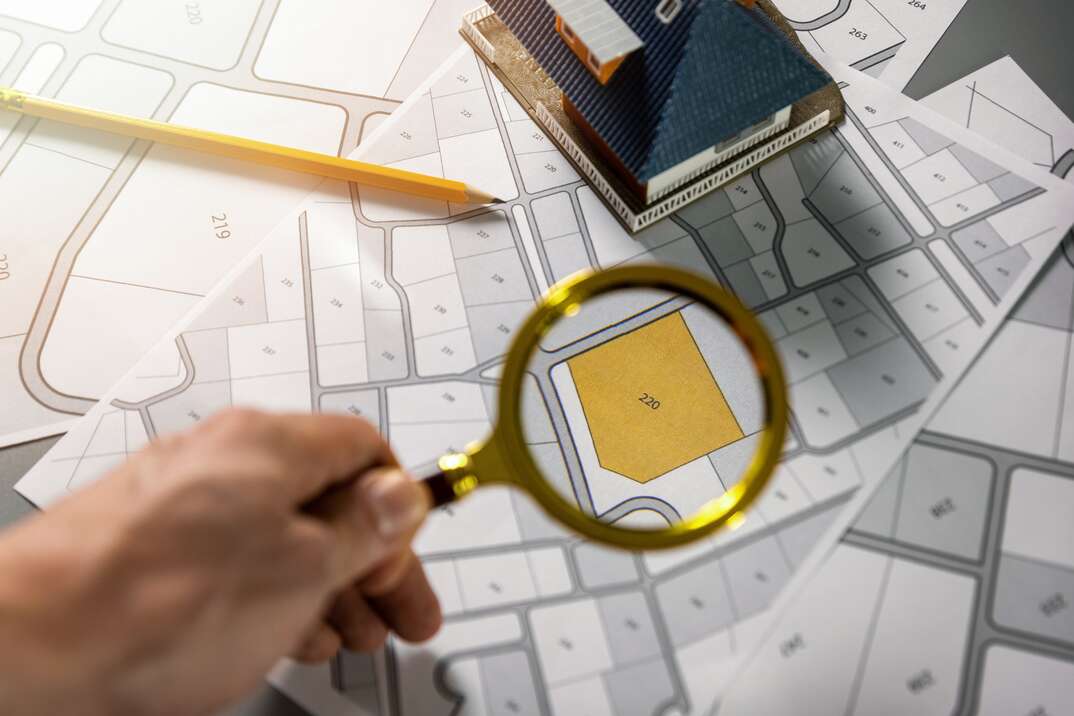- AppliancesElectriciansHVACLandscapingLocksmithPest ControlPlumbingRenovationRoofingT V RepairAll Home Improvement
- Car AccidentClass ActionCorporate LawCriminal DefenseDivorce LawEmployment LawFamily LawFinancial LawLegal AidMedical Injury LawyersMedical MalpracticeReal Estate LawWater Fire RestorationAll Legal
- InvestmentRetirementAll Finance
- Animal InsuranceAutoGeneral InsuranceHealth PolicyHome RentersAll Insurance
- DentalHealth SpecialistsAll Medical
- Animal CareVeterinaryAll Pets
- Auto GlassTowingAll Automotive
How Are Property Lines Established — and Why Do They Matter?

If you own a home, you might think you know where your land ends and your neighbors’ begins, but if you misjudge it by even a few inches, you could be heading for a legal dispute.
So, whether you’re thinking about adding a major extension to your home or just fencing in your backyard, you should establish where your property lines are before you begin by consulting your property deed or hiring a professional surveyor.
A property line defines the legal boundary between two plots of land so there's no gray area when it comes to ownership. These borders may be indicated by an obvious landmark such as a road or fence, or through buried metal pins or stakes at the corners of the property. Homeowners often use them to determine the acceptable placement of fences and pools or when planning structural additions.
How Are Property Lines Established?
When parcels of land are initially divided up, property lines are formed to define physical boundaries for legal ownership. Property lines may also be legally set or adjusted by current landowners who share borders through the creation of a lot line agreement. As long as the proposed division of land complies with local ordinances, these agreements can become legal and binding when the parties create, sign and file a property deed, describing the new property boundaries.
Homeowners and buyers who simply need to establish where these preexisting property lines are have several options.
- Hire a land surveyor. Professional land surveyors use GPS-enabled tools to map out the precise boundaries of a property, often working from existing parcel data or buried boundary markers. Homebuyers may need to hire a land surveyor to satisfy property line survey requirements for a mortgage or homeowners insurance policy.
- Read the property line map. Sometimes referred to as a plat, property line maps are typically available through your local assessor’s office. They often include elevations, structures and water features such as wells or ponds, and may encompass neighboring properties that share a border.
- Check the property deed. Often, you can find your property lines just by checking your property deed, which likely includes a worded description of the land’s boundaries. However, older deeds may reference landmarks that no longer exist.
- Search online. Property lines can be viewed by searching for Geographical Information System maps in your area. In many places, these interactive maps also let homeowners or potential buyers view other relevant data, such as planning projects or garbage pickup information.
- Look for property line markers. When properties are initially divided, markers such as stakes may be used to indicate boundaries. On newer properties, you can often find these objects by walking the outer edge of your land. A metal detector can help locate stakes that have been buried.
Property lines eliminate gray areas when it comes to property ownership, so they’re important whenever land changes hands. Lenders and title insurance companies often require a property line survey during the real estate buying process, as these legal boundary lines may affect the terms of any agreements. Current homeowners may also need a property survey when refinancing a mortgage.
Property lines also have practical applications when it comes to home improvement and construction. Knowing where your land boundaries are helps you avoid encroaching on property that isn't yours when installing a fence or water feature or building a home addition. Plus, in many areas, local ordinances require homeowners to place certain features, such as swimming pools, at a minimum distance from property lines for reasons of safety.
Although learning the exact location of your property lines may be an investment, it can potentially save you time and money in the long run. Knowing where your property begins and ends can minimize the risk of costly legal disputes and help you keep your relationships with your neighbors intact.
Elocal Editorial Content is for educational and entertainment purposes only. The information provided on this site is not legal advice, and no attorney-client or confidential relationship is formed by use of the Editorial Content. We are not a law firm or a substitute for an attorney or law firm. We cannot provide advice, explanation, opinion, or recommendation about possible legal rights, remedies, defenses, options or strategies. The opinions, beliefs and viewpoints expressed by the eLocal Editorial Team and other third-party content providers do not necessarily reflect the opinions, beliefs and viewpoints of eLocal or its affiliate companies. Use of the Blog is subject to the
Website Terms and Conditions.The eLocal Editorial Team operates independently of eLocal USA's marketing and sales decisions.



